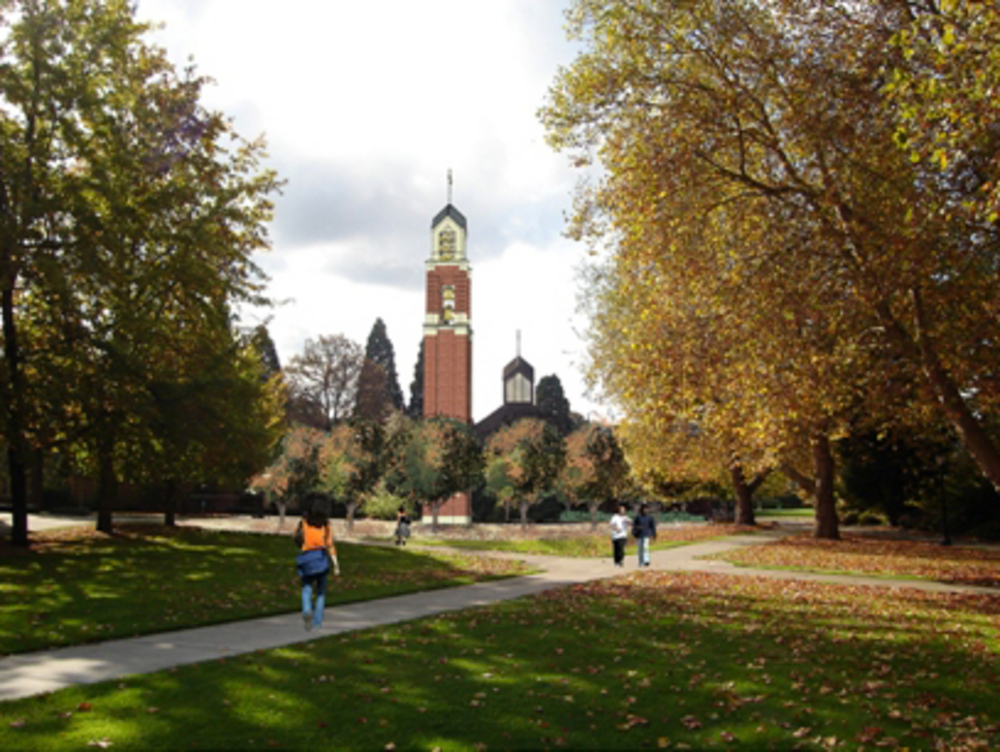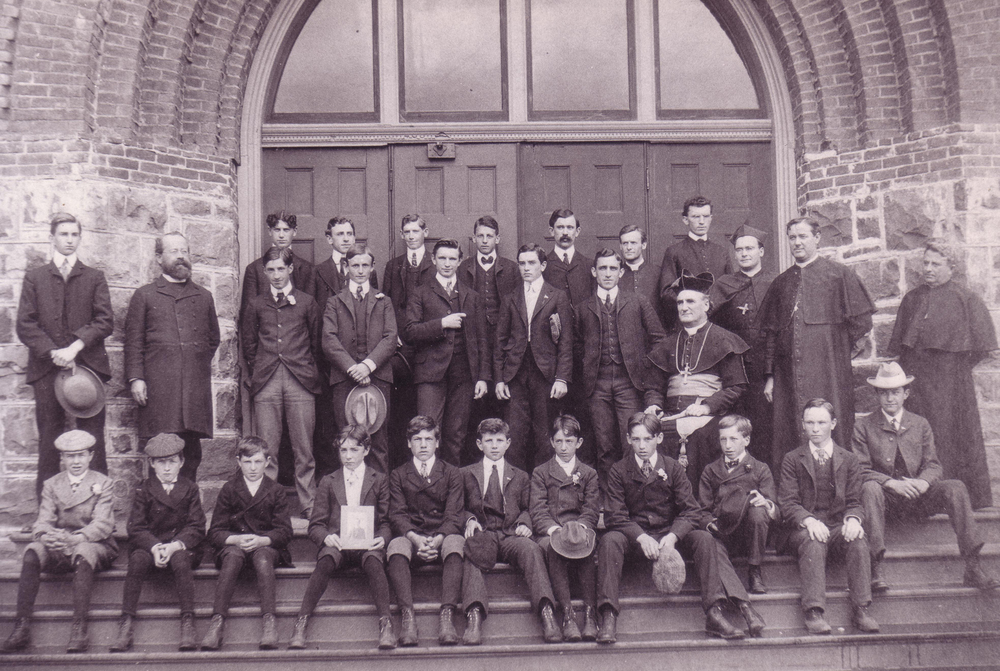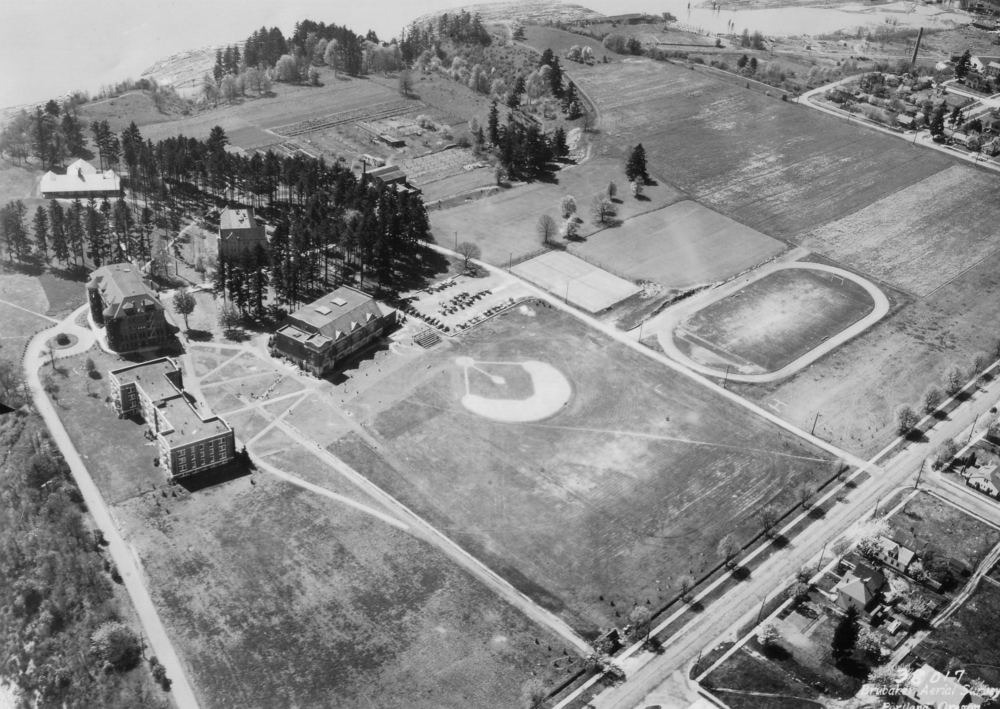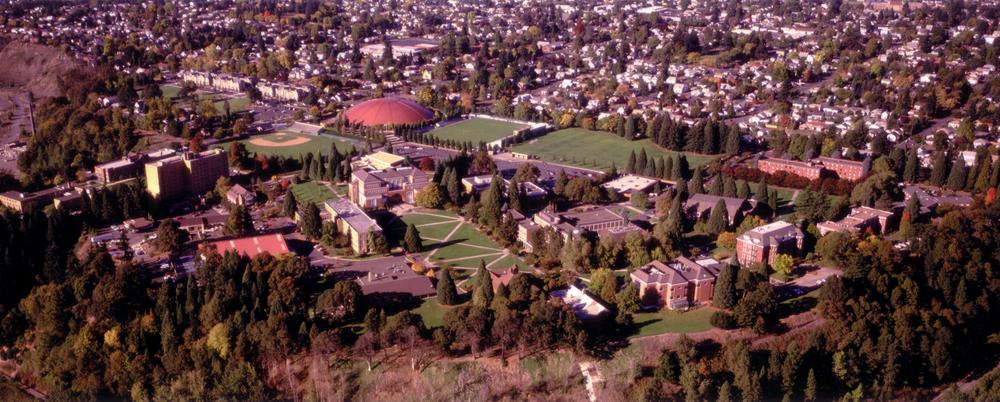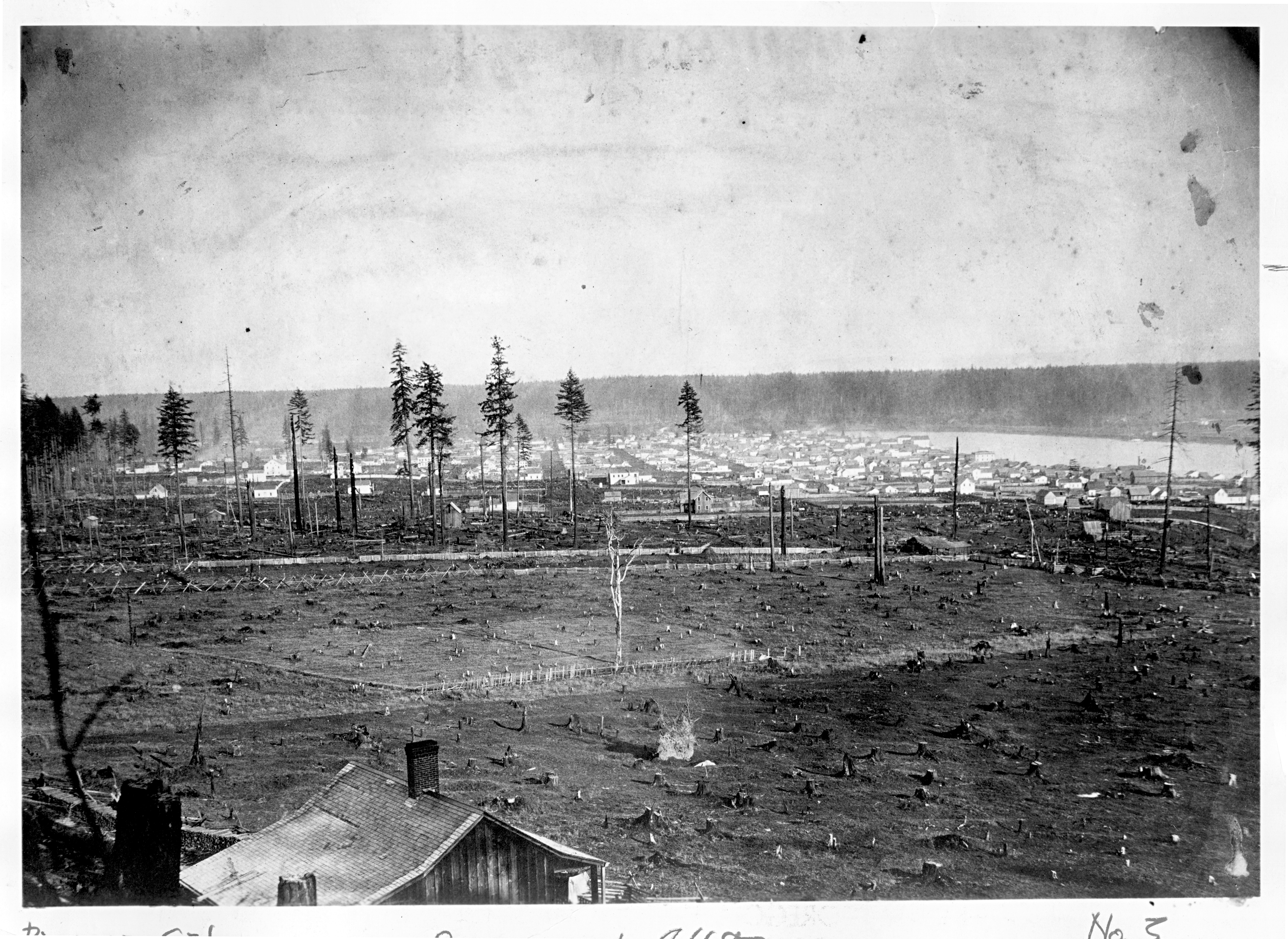"Founded on a bluff and run on that principle," as historian Jim Covert writes, the University of Portland was born on the morning of September 5, 1901, when the president casually rang a bell and summoned the other seven professors and forty boys to classes. From that moment on the steps of Waldschmidt Hall (now on the National Register of Historic Places), the school has become a nationally known university with more than 3,500 students, 300 professors, and an annual economic impact on Portland of some $170 million. Its alumni have earned Olympic gold medals, been elected senators and governors, and earned recognition in arts, business, teaching, and nursing. Among the university's better-known alumni are Howard Vollum (1935), founder of Tektronix; heart-valve inventor Donald Shiley (1951); U.S. ambassadors Dennis Barrett (1959) and Jim Larocco (1970); writer Jean Auel (1976); and international soccer star Tiffeny Milbrett (1995).
Oregon at the turn of the twentieth century was so unfriendly to Catholics that a ballot measure banning private education (aimed at Catholic schools) passed in 1922. Three years later, the U.S. Supreme Court overturned the law in Pierce v. Society of Sisters. Adamant that boys should have the opportunity for a Catholic college education in Oregon (girls could attend what became Marylhurst University, the only other Catholic college in Oregon until it closed in 2018), Archbishop Alexander Christie bought the lone hall and attendant acreage of the defunct Portland University, a short-lived Methodist college, on a bluff over the Willamette River in north Portland. Christie named the school Columbia University, honoring the Columbia River, and enlisted the help of the Congregation of Holy Cross, the Catholic order of priests and brothers that ran the University of Notre Dame.
By 1922, the new university offered a college degree, and in 1935 the name was changed to University of Portland. Women were admitted in all areas of study in 1951. In 1967, the Congregation handed legal title to the university to a lay board of trustees; and by 2002, when the university concluded its centennial year, U.S. News & World Report ranked it among the best ten regional universities in the nation and one of the "best educational bargains in the West." The University of Portland is known especially for the quality of its teachers (four professors have earned state or national professor-of-the-year honors) and for its successful women's soccer team, which won the NCAA Division I national championship in 2002 and 2005.
Since its early years as a liberal arts college focusing on the humanities and sciences, the University of Portland has expanded. It absorbed the former St. Vincent's School of Nursing in 1936 and the Multnomah College of Engineering in 1948. The university also opened a business school in 1935 (now named the Dr. Robert B. Pamplin, Jr., School of Business) and a school of education in 1962. The university serves primarily undergraduate students, but it also has eleven master’s degree programs and three doctoral programs.
The University of Portland stretches over 170 acres, both on the bluff and below on the riverfront on what was known as the Triangle Park Property. The riverfront campus, purchased in 2008, gives the university an opportunity to reconnect with the Willamette River in a manner not seen since its early years, when students were required to pass swimming tests in the river. Early plans include environmental science labs, a salmon recovery center, and a boathouse.
The University of Portland is the only comprehensive Catholic university in the state, and more than half of the university's 37,000 alumni live in the Portland/Vancouver metropolitan area. It contributes to Oregon’s civic life as a cultural center, with speakers, plays, sports, concerts, conferences, and symposia. It is the largest corporation in north Portland. Some 40 percent of its students each year are Oregonians.
-
![]()
University of Portland bell tower, 2009.
Courtesy University of Portland Clark Library, Archives & Artifacts -
-
Aerial view of UP campus, 1914.
Courtesy University of Portland, Clark Library, Early Campus Photographs -
University of Portland campus, aerial view, 1938.
Courtesy University of Portland Clark Library Archives & Artifacts -
University of Portland aerial view of campus, 2002.
Courtesy University of Portland Clark Library Archives & Artifacts -
![]()
Social lounge in the Villa Maria dorm, University of Portland, 1957.
Oregon Historical Society Research Library, Digital Collections, Al Monner news negatives; OrgLot1284_2954_6 -
![Fortman was one of the first female students to live on campus at the university.]()
Darlene Fortman at University of Portland Villa Maria dorm, 1957.
Fortman was one of the first female students to live on campus at the university. Oregon Historical Society Research Library, Digital Collections, Al Monner news negatives; OrgLot1284_2953_7 -
University of Portland library, 1973.
Courtesy University of Portland Clark Library Archives & Artifacts -
University of Portland, Franz Academic Hall, 1995.
Courtesy University of Portland Clark Library Archives & Artifacts -
University of Portland, Grove Plaza containing the "Christ the Teacher Sculpture," 1995.
Courtesy University of Portland Clark Library Archives & Artifacts -
University of Portland, Holy Cross members, 2005.
Courtesy University of Portland Clark Library Archives & Artifacts
Related Entries
-
![Brian James Patrick Doyle (1956-2017)]()
Brian James Patrick Doyle (1956-2017)
Writer Brian Doyle explored the spirit of Oregon’s small towns and the …
-
![Howard Vollum (1913–1986)]()
Howard Vollum (1913–1986)
Howard Vollum was a founding partner of Tektronix, an innovative electr…
-
![Jean M. Auel (1936-)]()
Jean M. Auel (1936-)
No contemporary Oregon writer has achieved the superstar celebrity stat…
-
![Pierce v. Society of Sisters (1925)]()
Pierce v. Society of Sisters (1925)
On June 1, 1925, in Pierce v. Society of Sisters of the Holy Names of J…
-
![Portland]()
Portland
Portland, with a 2020 population of 652,503 within its city limits and …
-
![Roger O. Doyle (1939–2012)]()
Roger O. Doyle (1939–2012)
Roger O. Doyle contributed both to higher education and the musical cul…
-
![University of Portland Pilots women's soccer]()
University of Portland Pilots women's soccer
The women’s soccer team is the most successful athletic club at the Uni…
Map This on the Oregon History WayFinder
The Oregon History Wayfinder is an interactive map that identifies significant places, people, and events in Oregon history.
Further Reading
Covert, James T. A Point of Pride: The University of Portland Story. Portland: U. of Portland Press, 1976.

